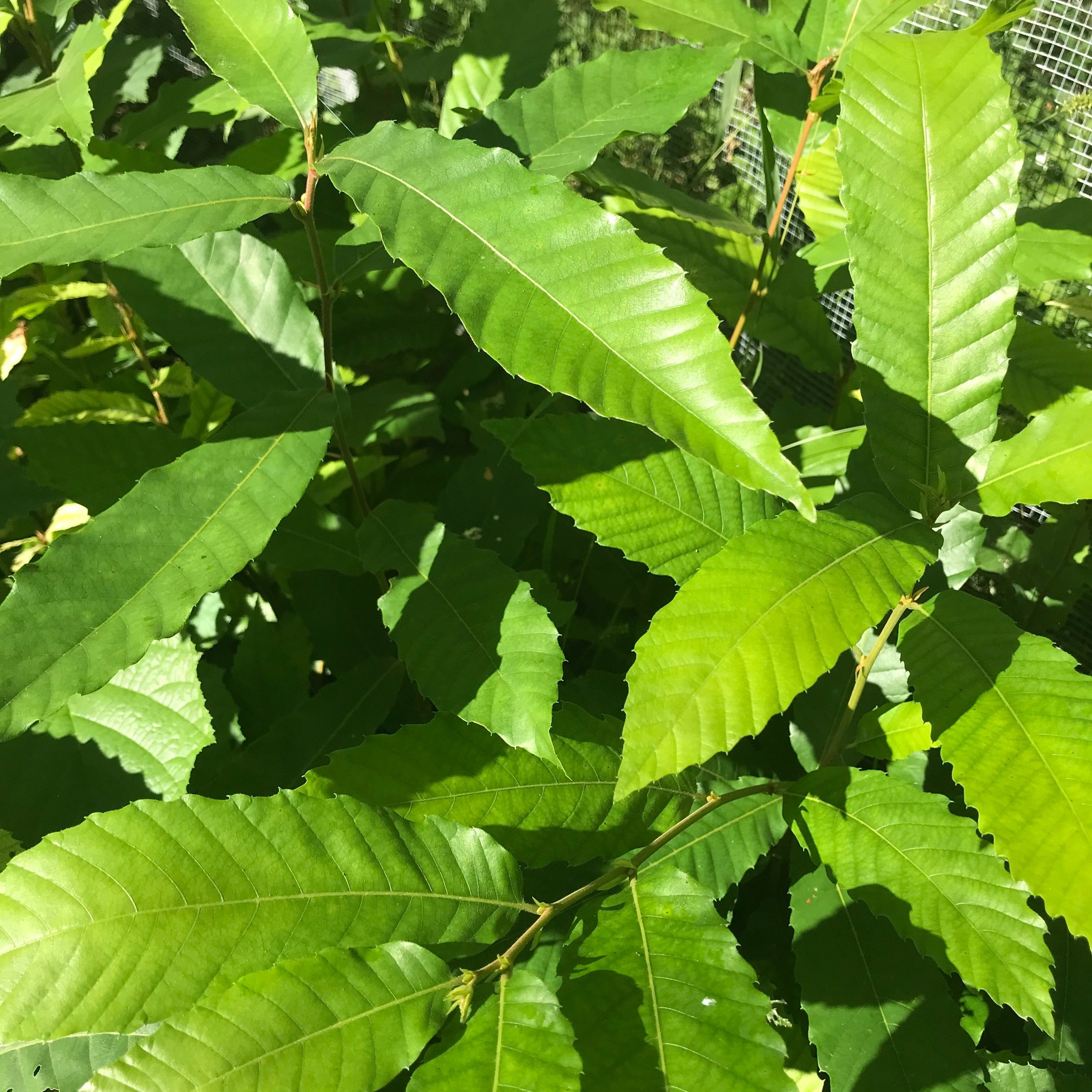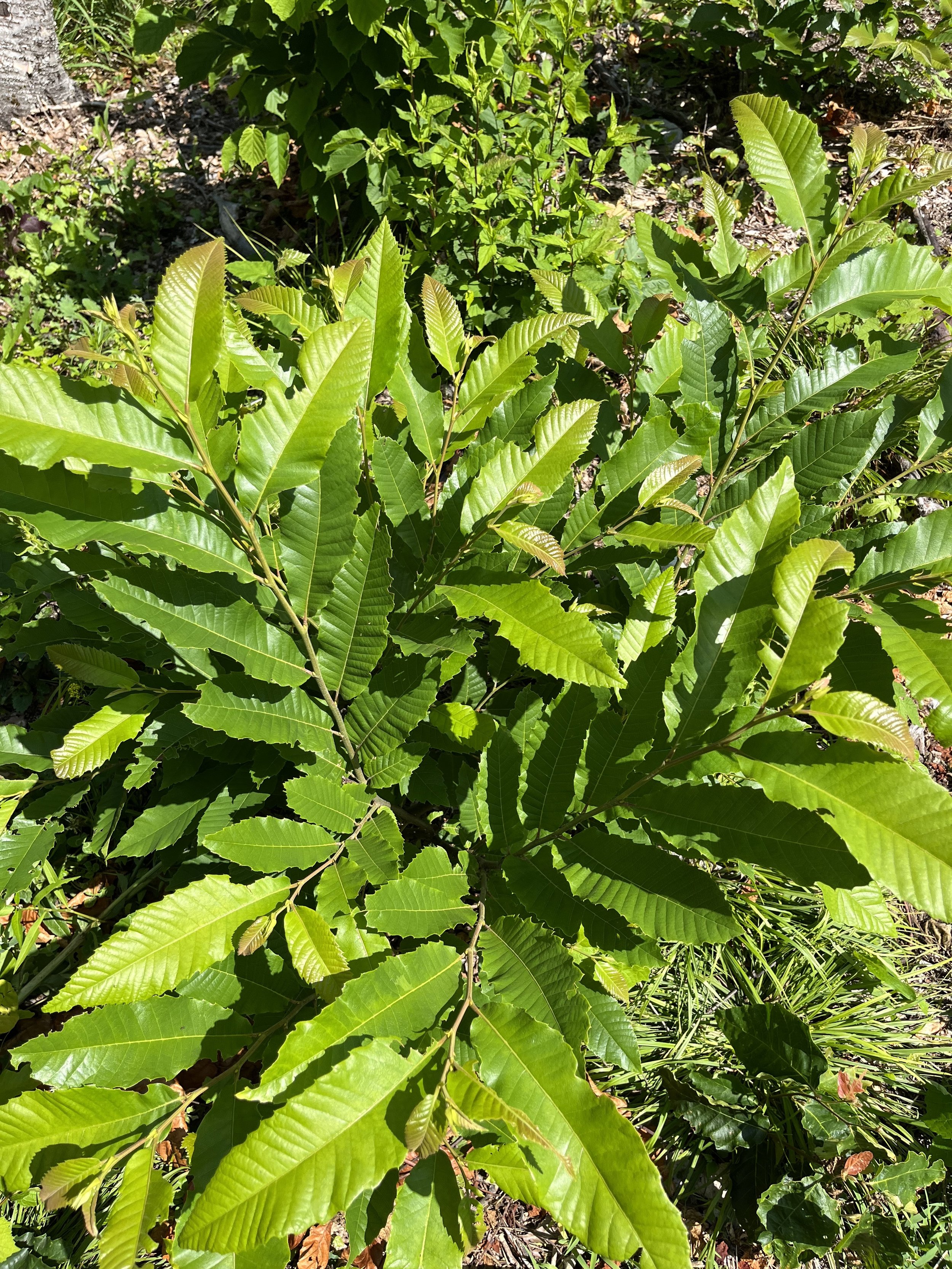Hybrid/Chinese Chestnut
1 and 2 yr old seedling trees, 16+ inches
No shipping to AK, HI, CA, WA, OR, UT, FL
Castanea genus
Hybrid Chestnuts and Chinese Chestnuts are some of the highest-priority trees planted on our land. They have the potential to feed us, livestock, and wildlife in abundance. Chestnut trees bear carbohydrate-rich nuts every year which is rare for nut trees. The trees and their nuts have rich cultural traditions all around the world and were once dominant in what is now the eastern United States until chestnut blight and logging wiped them out. A lot of effort has gone into crossing American and Chinese chestnuts to confer disease resistance and then back-crossing with American chestnuts to dilute the Chinese genetics. Ours are not that kind of hybrid. Our chestnuts come from diverse lineages of American, Chinese, European, and Japanese parents, all selected for blight resistance. They should have no problem in Zone 5 and probably hardy to Zone 4.
1 and 2 yr old seedling trees, 16+ inches
No shipping to AK, HI, CA, WA, OR, UT, FL
Castanea genus
Hybrid Chestnuts and Chinese Chestnuts are some of the highest-priority trees planted on our land. They have the potential to feed us, livestock, and wildlife in abundance. Chestnut trees bear carbohydrate-rich nuts every year which is rare for nut trees. The trees and their nuts have rich cultural traditions all around the world and were once dominant in what is now the eastern United States until chestnut blight and logging wiped them out. A lot of effort has gone into crossing American and Chinese chestnuts to confer disease resistance and then back-crossing with American chestnuts to dilute the Chinese genetics. Ours are not that kind of hybrid. Our chestnuts come from diverse lineages of American, Chinese, European, and Japanese parents, all selected for blight resistance. They should have no problem in Zone 5 and probably hardy to Zone 4.
1 and 2 yr old seedling trees, 16+ inches
No shipping to AK, HI, CA, WA, OR, UT, FL
Castanea genus
Hybrid Chestnuts and Chinese Chestnuts are some of the highest-priority trees planted on our land. They have the potential to feed us, livestock, and wildlife in abundance. Chestnut trees bear carbohydrate-rich nuts every year which is rare for nut trees. The trees and their nuts have rich cultural traditions all around the world and were once dominant in what is now the eastern United States until chestnut blight and logging wiped them out. A lot of effort has gone into crossing American and Chinese chestnuts to confer disease resistance and then back-crossing with American chestnuts to dilute the Chinese genetics. Ours are not that kind of hybrid. Our chestnuts come from diverse lineages of American, Chinese, European, and Japanese parents, all selected for blight resistance. They should have no problem in Zone 5 and probably hardy to Zone 4.





